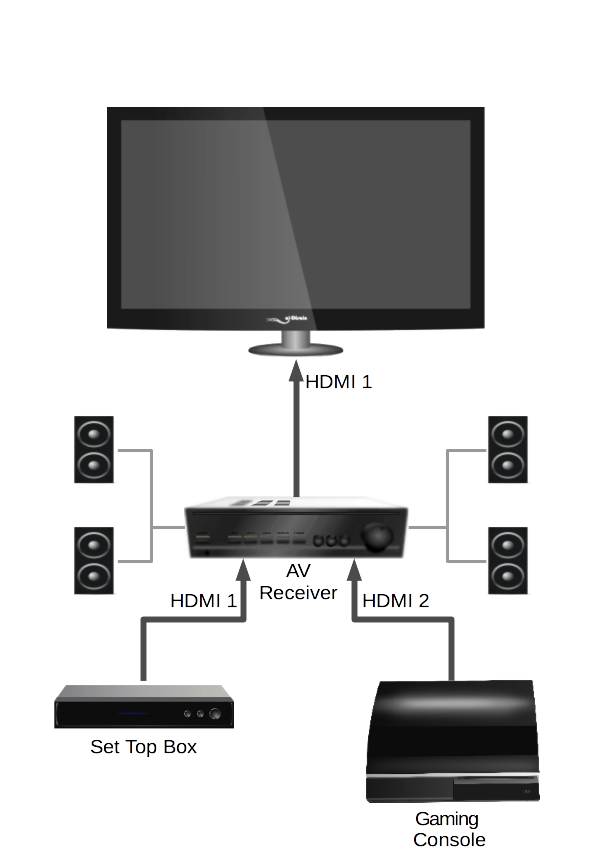Editor’s note: HDMI-CEC is also known as Anynet+ (Samsung), CE-Link (Toshiba), EZ-Sync (Panasonic), Bravia Theater Sync (Sony) and SimpleLink (LG). Apart from any eventual proprietary extensions, all support the same basic functionality.
There is a plague invading our living rooms for the past couple of years: remotes. First there was only one: the TV remote, then the VCR remote came in, but over the last couple of years, things started to go awry: DVD remote, Bluray remote, cable box remote, AV receiver remote and so forth.
Typical AV setup during the years
The thing is, when the TV remote appeared, there was only one device to control: the TV. When the VCR evolved, people would start by turning on the TV and then if the user would like to use the VCR, start to use the VCR remote. When the AV receiver appeared (those where preceded by HiFi stereos, but that’s a thing of the past, mostly…), things got a little murky: it was still possible to use only the TV remote, but if the user wanted improved audio quality, then the home cinema remote was also a necessity, and users needed to use both: TV remote to change channels and the home cinema remote to change audio levels. This wasn’t perfect but there was no way to improve as devices would not talk to each other.
Finally the cable set top box (STB) came along, and this changed the balance of forces: now, for the user to be able to watch TV at least 2 remotes where needed, 3 with a home cinema is also present.
Typically, an AV setup follows the following diagram:

Click for credits
With this kind of setup, users are presented with an extremely complex usage rules, which obliges the users to use a number of remotes for specific and often mandatory actions:
- turn on the TV and select the proper HDMI input, using the TV remote;
- turn on the AV receiver and select the proper HDMI input, using the AV receiver remote;
- turn on the set top box, using the STB remote;
- change channels, using the STB remote;
- change the volume either using the STB or the home cinema remote. Actually, adding to users’ confusion, the AV receiver remote is the only one that can the used to change the audio volume if the channel is broadcasted on Dolby 5.1.
- Then, to shut every thing down, all the remotes needed to be used.
The above process is even made more complicated with a second HDMI device is present, where the users needs to switch between those, either using the TV or the AV receiver remotes.
First answer, but only in Europe
In Europe, people from CENELEC addressed this issue during the analog systems, by designing the SCART interface (also known as EuroAV, Péritel or EIA Multiport, depending on where you live).

This interface carried within a single plug all the required AV signals (RGB and composite video, stereo audio) and also the forefather of hot plug detection (and also a small known feature called AV.Link, more on that later). This was originally intended to handle a different issue: video format detection: either 4:3 or 16:9. This was due to the fact that 16:9 broadcast started to be present on some places, and specifically in France. As history now recalls, analog 16:9 broadcasting wasn’t a success by any means, but it coincided with the mass availability of DVD players, and yes, on those SCART interfaces were all but omnipresent on the european market.
DVD players with SCART interface were the first instance of mass hot plug management, whereas when being turned on, the DVD players would signal to the TV a new signal is available, which if correctly implemented, would cause the TV to tune to the newly available input. Not only this, but it would also allow the TV to adapt the picture format to the format the DVD announced. This feature has been virtually present on all DVD players and STBs since then.

